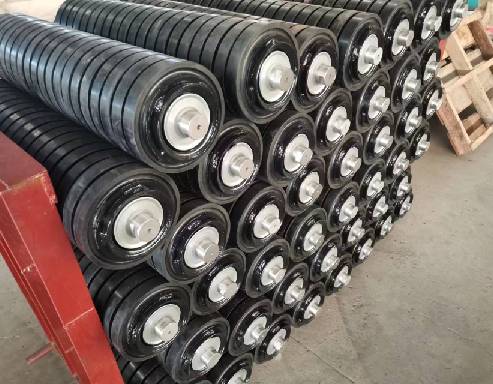 Afrikaans
Afrikaans  Albanian
Albanian  Amharic
Amharic  Arabic
Arabic  Armenian
Armenian  Azerbaijani
Azerbaijani  Basque
Basque  Belarusian
Belarusian  Bengali
Bengali  Bosnian
Bosnian  Bulgarian
Bulgarian  Catalan
Catalan  Cebuano
Cebuano  Corsican
Corsican  Croatian
Croatian  Czech
Czech  Danish
Danish  Dutch
Dutch  English
English  Esperanto
Esperanto  Estonian
Estonian  Finnish
Finnish  French
French  Frisian
Frisian  Galician
Galician  Georgian
Georgian  German
German  Greek
Greek  Gujarati
Gujarati  Haitian Creole
Haitian Creole  hausa
hausa  hawaiian
hawaiian  Hebrew
Hebrew  Hindi
Hindi  Miao
Miao  Hungarian
Hungarian  Icelandic
Icelandic  igbo
igbo  Indonesian
Indonesian  irish
irish  Italian
Italian  Japanese
Japanese  Javanese
Javanese  Kannada
Kannada  kazakh
kazakh  Khmer
Khmer  Rwandese
Rwandese  Korean
Korean  Kurdish
Kurdish  Kyrgyz
Kyrgyz  Lao
Lao  Latin
Latin  Latvian
Latvian  Lithuanian
Lithuanian  Luxembourgish
Luxembourgish  Macedonian
Macedonian  Malgashi
Malgashi  Malay
Malay  Malayalam
Malayalam  Maltese
Maltese  Maori
Maori  Marathi
Marathi  Mongolian
Mongolian  Myanmar
Myanmar  Nepali
Nepali  Norwegian
Norwegian  Norwegian
Norwegian  Occitan
Occitan  Pashto
Pashto  Persian
Persian  Polish
Polish  Portuguese
Portuguese  Punjabi
Punjabi  Romanian
Romanian  Russian
Russian  Samoan
Samoan  Scottish Gaelic
Scottish Gaelic  Serbian
Serbian  Sesotho
Sesotho  Shona
Shona  Sindhi
Sindhi  Sinhala
Sinhala  Slovak
Slovak  Slovenian
Slovenian  Somali
Somali  Spanish
Spanish  Sundanese
Sundanese  Swahili
Swahili  Swedish
Swedish  Tagalog
Tagalog  Tajik
Tajik  Tamil
Tamil  Tatar
Tatar  Telugu
Telugu  Thai
Thai  Turkish
Turkish  Turkmen
Turkmen  Ukrainian
Ukrainian  Urdu
Urdu  Uighur
Uighur  Uzbek
Uzbek  Vietnamese
Vietnamese  Welsh
Welsh  Bantu
Bantu  Yiddish
Yiddish  Yoruba
Yoruba  Zulu
Zulu Optimizing Conveyor Systems with High-Quality Roller Idlers for Enhanced Material Handling Efficiency
Understanding Conveyor Roller Idlers Key Components in Material Handling
Conveyor systems are essential for efficient material handling across various industries, from manufacturing to logistics. One of the critical elements of these systems is the conveyor roller idler, which plays a significant role in the smooth operation and longevity of the conveyor belt.
What is a Conveyor Roller Idler?
A conveyor roller idler is a cylindrical component that supports the conveyor belt as it moves materials from one point to another. Positioned below the belt, these rollers facilitate smooth movement and help maintain proper tension on the belt, which is crucial for efficient operation. They are designed to bear the load of the materials being transported and to minimize friction, thereby enhancing the overall effectiveness of the conveyor system.
Types of Conveyor Roller Idlers
Conveyor roller idlers come in various designs, each suited for different applications
. The most common types include1. Impact Idlers These are placed at the loading point of the conveyor system to absorb the impact of materials falling onto the belt. Their robust construction helps prevent damage to the belt and subsequent components.
2. Return Idlers Located on the return side of the conveyor, these idlers support the belt as it returns to the loading area. They prevent the belt from sagging and ensure that it remains in optimal condition.
3. Training Idlers Designed to keep the belt aligned, training idlers help prevent it from drifting to one side. Proper alignment is vital for preventing premature wear and tear.
4. Belt Support Idlers These provide additional support along the conveyor's path, ensuring that the belt remains tensioned and properly positioned. They play a significant role in reducing belt distortion during operation.
conveyor roller idler

Importance of Conveyor Roller Idlers
1. Load Distribution By supporting the weight of materials being conveyed, roller idlers distribute the load evenly across the belt, reducing stress on any single part of the system.
2. Friction Reduction The smooth movement of the rollers minimizes friction, leading to less wear on the conveyor belt and motor, which can significantly extend the life of the system.
3. Efficiency Properly functioning roller idlers contribute to the overall efficiency of the conveyor system. By ensuring that the belt operates smoothly and remains tensioned, they prevent downtime that can occur from jams or belt failures.
4. Cost-Effective Operation Investing in high-quality roller idlers can lead to significant cost savings over time. Reducing wear on the conveyor belt and other components leads to lower maintenance costs and minimizes the need for frequent replacements.
Maintenance of Conveyor Roller Idlers
Regular maintenance of conveyor roller idlers is crucial for ensuring their longevity and functionality. This includes
- Inspection Regular visual checks should be conducted to identify any signs of wear and tear or misalignment. - Lubrication Keeping the rollers properly lubricated helps reduce friction and prolongs their lifespan. - Replacement Worn-out idlers should be replaced promptly to prevent damage to the conveyor system as a whole.
Conclusion
In conclusion, conveyor roller idlers are indispensable components of conveyor systems. Their ability to support loads, reduce friction, and maintain proper belt alignment directly affects the efficiency and longevity of material handling operations. By understanding their types, functions, and maintenance requirements, businesses can ensure a more effective and cost-efficient operation, paving the way for enhanced productivity and reduced operational costs. Investing in quality idlers and regular maintenance is essential for any industry relying on conveyor systems for material movement.
-
Revolutionizing Conveyor Reliability with Advanced Rubber Lagging PulleysNewsJul.22,2025
-
Powering Precision and Durability with Expert Manufacturers of Conveyor ComponentsNewsJul.22,2025
-
Optimizing Conveyor Systems with Advanced Conveyor AccessoriesNewsJul.22,2025
-
Maximize Conveyor Efficiency with Quality Conveyor Idler PulleysNewsJul.22,2025
-
Future-Proof Your Conveyor System with High-Performance Polyurethane RollerNewsJul.22,2025
-
Driving Efficiency Forward with Quality Idlers and RollersNewsJul.22,2025





























